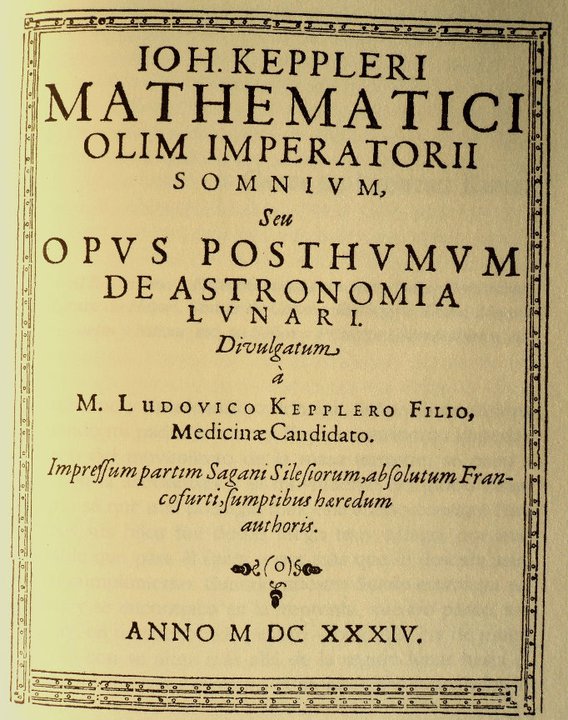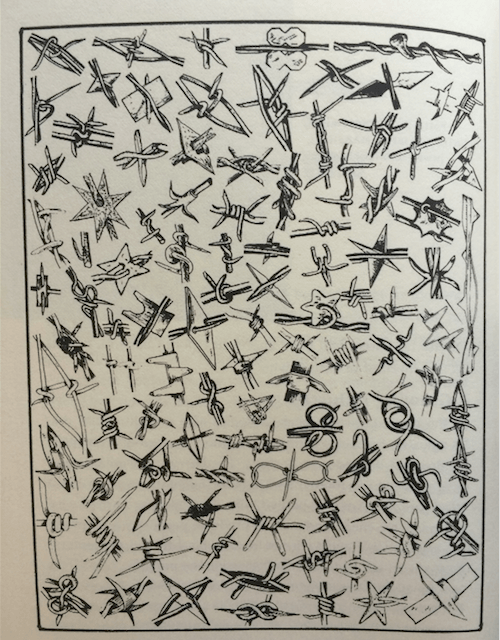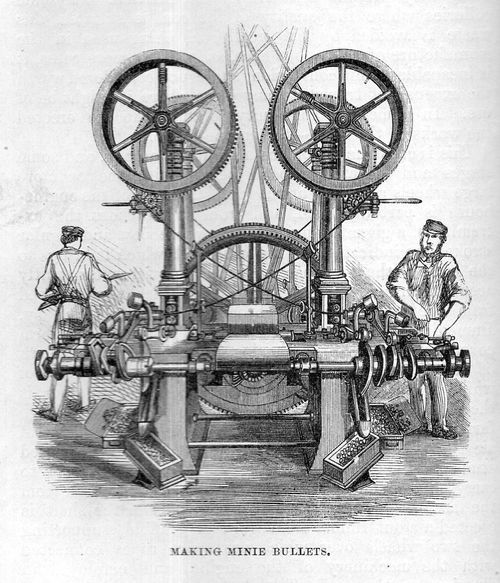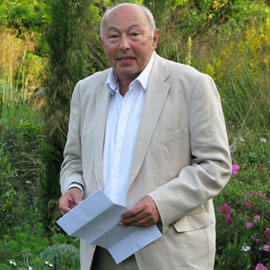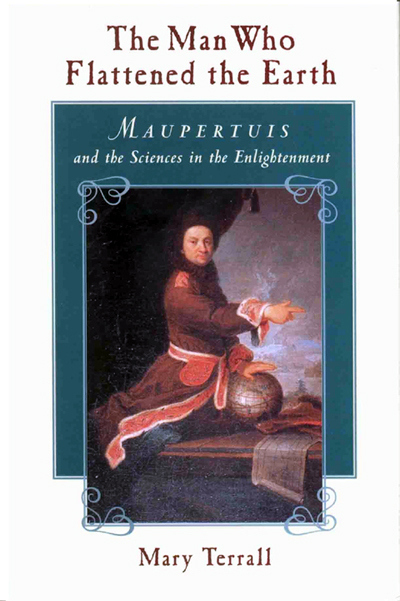Whewell’s Gazette
Your weekly digest of all the best of
Internet history of science, technology and medicine
Editor in Chief: The Ghost of William Whewell
Year 2, Volume #20
Monday 30 November 2015
EDITORIAL:
Whewell’s Gazette your weekly #histSTM links list bringing you all that we could gather together of the histories of science, technology and medicine from the four corners of the Internet over the last seven days cruises into December.
For the second week running we feature Einstein and his General Theory of Relativity, this time celebrating its official one-hundredth birthday. The current (understandable) dominance in the #histsci news of Einstein at the moment leads to thoughts of the Einstein-Currie syndrome, phenomenon or problem as it is variously known. This is the fact that Einstein and Currie are so well known that other important scientists tend to disappear in their shadows. The same phenomenon occurs with Galileo and Newton in the seventeenth century. In fact there is an excellent book by Lesley Murdin titled Under Newton’s Shadow that highlights the other seventeenth English astronomers who were unfortunate enough to be Newton’s contemporaries.
A second unfortunate phenomenon resulting from the dominance in #histSTM of a handful of big names are the articles with titles like “the most important scientist you’ve never heard of!” These are particularly prevalent amongst those trying to promote the role of women in #histSTM. In principle the idea is good but unfortunately the authors almost always choose one of a group of names of women scientist who are in the meantime very well known indeed. A good example this week is an article to be found in our technology rubric, There’s a Navy Destroyer & a Tech Conference Named After This Person But You’ve Probably Never Heard of Her, which is an article about Grace Hopper. Now anybody who is remotely interested in the history of computers and computer science, who doesn’t know about Grace Hopper has being living under a stone. Grace Hopper is one of the most well known computer scientists in the world.
This is just one example and I could go on to list quite a lot more and I think we need a change in the way we approach the subject. Instead of writing the two-hundredth article about Grace Hopper, Lise Meitner, Jocelyn Bell Burnell or whoever we should concentrate on making the many not quite as famous women in #histSTM better known and showing that the spread is much wider than just a few star names.
That this is possible is excellently demonstrated by blogs/websites such as TrowelBlazers or Lady Science. A good example of this by a non-women-specialist blog in this week’s new post at Restricted Data: The Nuclear Secrecy Blog, Women, Minorities and the Manhattan Project. These historians are showing the way. Let’s get away from emphasising the same small handful of star names and start looking at the underbelly and bringing the not quite as famous to the fore.
Quotes of the week:
We humans have not been around long enough yet to see the trees get really angry. – Liam Heneghan (@DublinSoil)
Henry Moseley
Should have died cosily
At home aged 93, Nobel laureate, former PRS
And not in that mess. – James Sumner (@JamesBSumner)
“History of science became legend, legend became myth, and some prior work that should not have been forgotten was lost.” – Jeremy Yoder (@JBYoder)
“A creationist commenter gets to the heart of the problem: “I would rather believe and be wrong, than not believe and be right.”” – Richard Carter (@friendsofdarwin)
“John Oliver: “There was only one time in US history when refugees actually did wipe everyone out—and we’ll be celebrating it on Thursday.”” – h/t @Pogue
“I’ve sorted all my Richard Dawkins books in condescending order”. – Paraic O’Donnell (@paraicodonnell)
Scared of clocks:
Hates a young boy:
Very well educated but weirdly obsessive:
Richard Dawkins is Captain Hook – Clee ((@jmclee)
“Ignorance is not so incurable as error.” George Berkeley (1724) h/t @MichelleDiMeo
‘The first act of compassion is to relieve the fool of his folly’ Robert Grosseteste h/t @mcleish_t
“Time Doesn’t Exist Clocks Exist” – Philosophical Graffiti h/t @williamcrawley
“Tang alchemists accidentally invented a primitive form of gunpowder while trying to create an elixir of youth. Ironic”. – Jill Levine (@jilldlevine)
“Chimps are our closest relatives, and yet they never send us Christmas cards. – Chris Addison” h/t @DarwinMonkey
“Dear world, I’d like to unsubscribe from your mailing list. Thanks”. – Finn Arne Jørgensen (@finnarne)
“Actually Wittgenstein is the name of the philosopher not the monster”. – James (@ApathTea)
“I have been trying to think the Unthinkable. But it turns out you can’t”. – @historyscientis
Birthday of the Week:
Einstein’s General Theory of Relativity born 25 November 1915
The New Yorker: The Space Doctor’s Big Idea
The New York Times: A Century Ago, Einstein’s Theory of Relativity Changed Everything
Huff Post Science: The Blog: Gaga for Gravitation
Forbes: General Relativity and the ‘Lone Genius’ Model of Science
The Washington Post: Einstein’s General Relativity at 100: Put that in your pipe and smoke it
The New York Times: Albert Einstein and Relativity in the Pages of The Times
Science Museum: The past, present and future of general relativity
In the Dark: 100 Years of General Relativity
SpaceWatchtower: Centennial: Einstein’s General Theory of Gravity
Scientific American: Einstein’s Unfinished Dream: Marrying Relativity to the Quantum World
BBC: Does Einstein’s general theory of relativity still mater?
BBC: What is Albert Einstein’s Theory of General Relativity?
Science Daily: What Did Einstein Mean By ‘Curved’ Spacetime?
National Science Foundation: Albert Einstein, in his own words

Albert Einstein developed the theories of special and general relativity. Picture from 1921.
Source: Wikimedia Commons
The Economist: General Relativity at 100
Youtube: BackstromGroup: Happy Thanksgiving & Happy 100th Anniversary
Youtube: Einstein 100 – Theory of General Relativity
ESA: Lisa Pathfinder: 100 Years of General Relativity
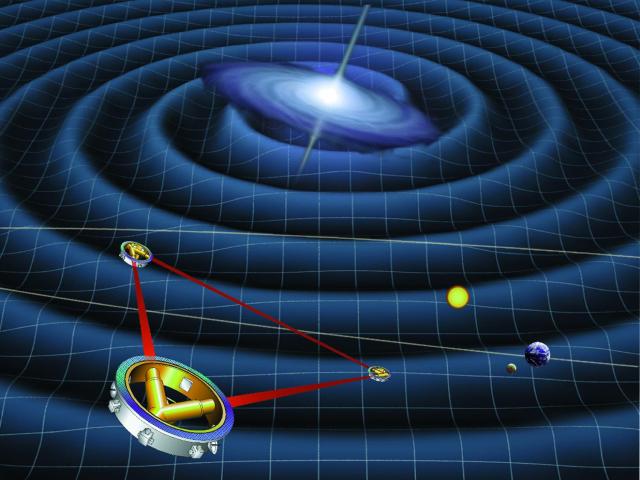
NASA illustration of LISA, taken from http://lisa.jpl.nasa.gov/gallery/lisa-waves.html.
Perimeter Institute: General Relativity from A to Z
BBC Radio 4: In Our Time: Relativity
AMNH: General Relativity
Popular Science: General Relativity: 100 Years Old and Still Full of Surprises
Scientific America: 100 Years of General Relativity: Scientific American Special Issue
Slate: On the Anniversary of Two Scientific Revolutions
BuzzFeed: 14 Rare Photos of Albert Einstein

Here he is having a picnic in the woods near Oslo, 1920.
Albert Einstein Archives / Princeton University Press
Princeton University Press: Thanks Einstein: Alice Calaprice on the man behind the myth
Princeton University Press: Blog: Was Einstein the First to Discover General Relativity?
Open Culture: Albert Einstein On God: “Nothing More Than the Expression and Product of Human Weakness”
The Guardian: My hero: Albert Einstein by Graham Farmelo
Nature: History: Einstein was no lone genius

Marcel Grossmann (left) and Michele Besso (right), university friends of Albert Einstein (centre), both made important contributions to general relativity.
Grossmann, Einstein: ETH-Bibliothek Zürich/Bildarchiv; Besso: Besso Family/AIP Emilio Segre Visual Archives
PHYSICS, ASTRONOMY & SPACE SCIENCE:
Yovisto: Alfonso from Spain and the Alfonsine Tables
Yovisto: Johannes van de Waals – A Pioneer of the Molecular Sciences
BackRe(Action): Dear Dr B: Can you think of a single advancement in theoretical physics, other than speculation, since the early 1980s?
AHF: Herbert York
True Anomalies: The Meteorite Crater that Wasn’t: Reflections on SPECTRE
Smithsonian.com: How NASA’s Flight Plan Described the Apollo 11 Moon Landing
The Somnium Project: Johannes Kepler: Somnium (The Dream)
Alembic Rare Books: Bringing Some Culture to the Physicists: Nina Byers & Richard Feynman
Smithsonia.com: The World’s First Nuclear Reactor was Built in a Squash Court
JHI Blog: The “Conquest of the Sun” and Ideas About Energy
Ri-Science: Charte der Gebirge Des Mondes, 1878
Restricted Data: The Nuclear Secrecy Blog: Women, minorities, and the Manhattan Project
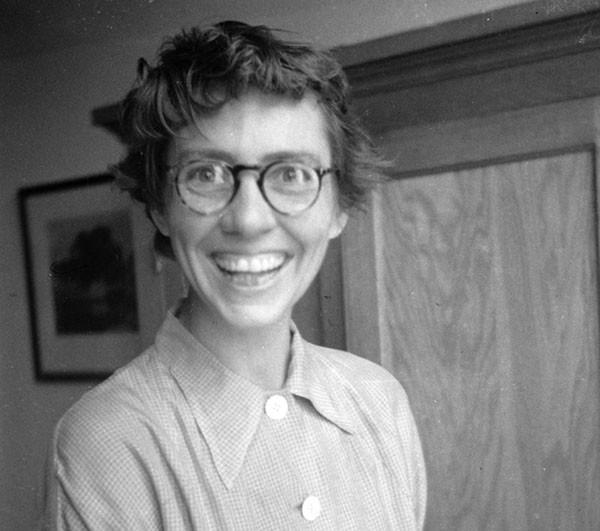
A relatively young Katharine (“Kay”) Way, one of the many female scientists of the Manhattan Project, and one of the rare few scientists whose work took her to all of the major Manhattan Project sites. Source: Emilio Segrè Visual Archives.
BBC: Jocelyn Bell Burnell
The Washington Post: A ground zero forgotten
EXPLORATION, CARTOGRAPHY AND NAVIGATION:
Medievalists.net: The Use of Lead and Line by Early Navigators in the North Sea
MBS Birmingham: Amateur gentlemen, Everest, and the Science of Foie Gras
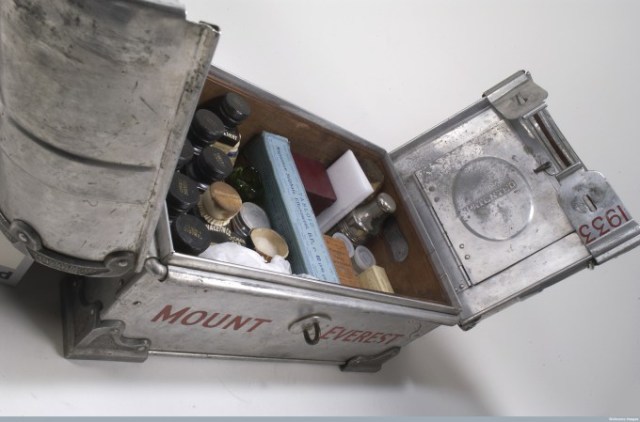
L0035747 Tabloid medicine chest used on 1933 Mount Everest Expedition
Credit: Wellcome Library, London.
New South Wales: State Library: Discover Collection: In search of rich lands: The Dutch
Icelandic Saga Map: Mapping the Icelandic Sagas
Boston 1775: Mapping Out a Map-Filled Visit to Boston
The Recipes Project: A Recipe for Teaching Atlantic World History: Food and the Columbian Exchange
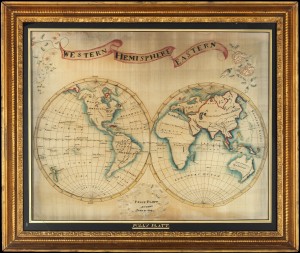
Polly Platt, Map sampler (1809), Made in Dutchess County, Pleasant Valley, New York, United States, Purchase, Frank P. Stetz Bequest, in loving memory of David Stewart Hull, 2012, 2012.64, Courtesy of The Metropolitan Museum of Art.
Instagram: Embroidered Globe by Lydia Satterthwaite, 1817
British Library: Maps and views blog: Magnificent Maps of New York
National Library of Scotland: Blaeu Atlas Maior, 1662-5
MEDICINE & HEALTH:
Thomas Morris: Bleeding you well
Neuroscientifically Challenged: History of Neuroscience: The mystery of trepanation
Archaeology: Paleo-dentistry
Collectors Weekly: War and Prosthetics: How Veterans Fought for the Perfect Limb

Left, this Civil War era portrait shows a veteran with a typical wood and leather prosthetic leg. Image courtesy the National Museum of Health and Medicine. Right, this Anglesey-style wooden leg was produced in Britain around 1901, and features a jointed knee and ankle and a spring-fitted heel. Image courtesy of the Science Museum / SSPL.
The Recipes Project: Van Helmont’s Recipes
Early Modern Medicine: Understanding Anger
University of Glasgow: UofG shines light on Erskine archive
Freud Quotes: 1938: Sigmund Freud Arrives in London as Refugee
Nursing Clio: Nursing Thanksgiving
Thomas Morris: Struck dumb
The Guardian: Man stole brains from medical museum and put them on eBay
The Walrus: Doctors Without Science: A brief history of quackery, from leeches to ostrich eggs
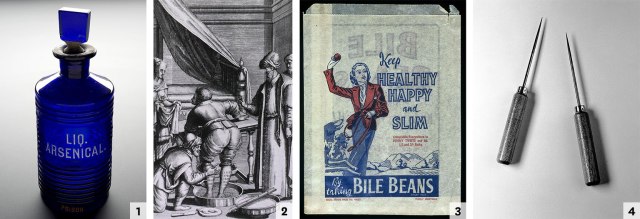
1 An arsenic bottle. 2 Eighteenth-century European engraving of Egyptian bloodletting. 3 A 1930s bag advertising purgative medicine. 4 Lobotomy instruments.
The Chirurgeon’s Apprentice: Hold the Butter! A Brief History of Gorging
University of Toronto: PhD Thesis: From the Hands of Quacks: Aural Surgery, Deafness, and the Making of a Surgical Specialty in 19th Century London by Jaipreet Virdi-Dhesi Free online as pdf
Thomas Morris: Nothing to worry about
The Public Domain Review: The Science of Life and Death in Mary Shelley’s Frankenstein
Dittrick Medical History Center: Todd’s Head Spanner 1930
History Extra: Your 60-second guide to the Black Death
TECHNOLOGY:
Conciatore: Lead Crystal
99% Invisible: Episode 157: Devil’s Rope
Medium: Clipping the Devil’s Rope
Science at Play: Fingerprinter
Atlas Obscura: The Telharmonium was the Spotify of 1906
Historically Speaking: Desperately Seeking Ernest
Ptak Science Books: Gear, Teeth, Minie Bullets, Cloth Bindings (1864)
PRI: When Ireland gathered around ‘the Wireless’ in the dark, one boy saw the light
EARTH & LIFE SCIENCES:
Atlas Obscura: See a 400-Year-Old Book Made Entirely from Feathers
History of Geology Group: A contemporary William Smith map
NCSE: The Plane Truth at Last Free online web and ebook
Notches: Histories of Sexualities in Central and Eastern Europe
British Library: Discovering Literature: Romantics and Victorians: Darwin and the theory of evolution
The Telegraph: First picture of young Charles Darwin on HMS Beagle reveals shipmate squabbles
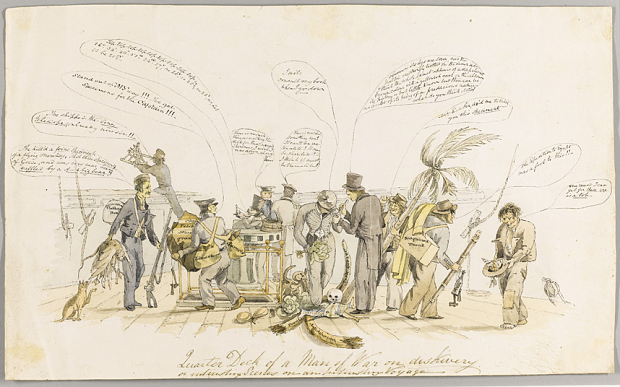
Charles Darwin on board the Beagle, painted off the coast of Argentina on 24th September, 1832 Photo: Sotheby’s
artlyst: Charles Darwin Watercolour Painted On the Ship Beagle Discovered
The Guardian: Unique watercolour of Darwin on HMS Beagle tipped to fetch upwards of £50,000 at auction
History: This Day in History: Origin of Species is published
abc.net: News: London skeletons reveal British capital’s 2,000-year history as ethnic melting pot
The Walrus: The Roughneck Diaries
Colossal: Art Meets Cartography: The 15,000-Year History of a River in Oregon Rendered in Data
Naturalis Historia: Dinosaurs, Dragons and Ken Ham: The Literal Reality of Mythological Creatures
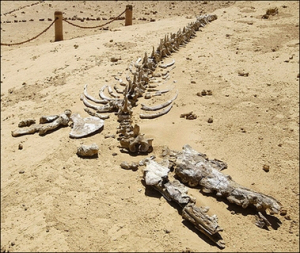
A 40 million year old whale fossil from “whale valley” in Egypt not far from Cairo. Here hundreds of whale fossils lie exposed in this wind eroded valley. These whales where large headed toothed whales that are not alive today. Many of these would have been exposed for ancient Egyptians to see and wonder what animal they were associated with. (AFP/File/Cris Bouroncle)
SNAP.PA: The history of climate change summed up in 10 key dates
Palaeoblog: Born This Day: Dunkinfield Henry Scott
Thinking Like a Mountain: The Decline of Natural History & the Rise of Biology in 19thc Britain
CHEMISTRY:
Chemistry World: Six of the best from Stella
National Geographic: An 80-Year-Old Prank Revealed, Hiding in the Periodic Table!
META – HISTORIOGRAPHY, THEORY, RESOURCES and OTHER:
JHI Blog: Hellenism and the Materiality of Greek Books in Renaissance Italy
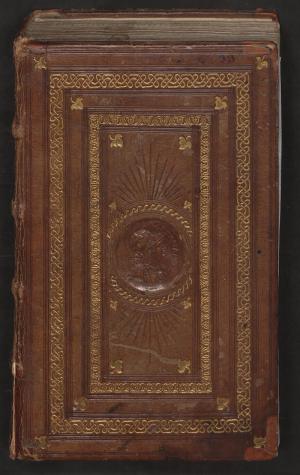
A copy of the Anthologia Graeca (1494) printed by Lorenzo de Alopa in 1494. Notice the raised bands on the spine, non-projecting endbands, and how the bookblock is smaller than the boards.
Science Museum: Volunteering for the Cosmonauts exhibition
The Guardian: Scientists finally get under the skin of a 13th century publishing mystery
Phy.org: Getting under the skin of a medieval mystery
University of York: Getting under the skin of a Medieval mystery
University of Cambridge Department of History and Philosophy of Science: John Forrester 25/08/1949–24/11/2015
University of Cambridge Department of History and Philosophy of Science: Obituary John Forrester (25 August 1949–24 November 2015)
U.S. National Library of Medicine: Images from the History of Medicine
History of the Human Sciences: December 2015; 28 (5) Visibility matters: Diagrammatic Renderings of Human Evolution and Diversity in Physical, Serological and Molecular Anthropology: Table of Contents
The Telegraph: Duncan White, Catherine Nixey and Thomas Morris [historian of medicine] win 2015 Jerwood Awards
History of Psychiatry: December 2015: 26 (4) Table of Contents
The Vintage Scientific Instruments of Brown University: We’re looking for old scientific instruments at Brown!
Smithsonian Science News: Smithsonian Libraries’ Rare Texts Include Early Superstars of Science
ESOTERIC:
Conciatore: The Sincerest Form of Flattery
Conciatore: Veins of the Earth
BOOK REVIEWS:
Nature: Books in Brief: Thunder and Lightning: Weather Past, Present and Future; The Orange Trees of Marrakesh: Ibn Khaldun and the Science of Man etc.
New Scientist: How a creationist instinct stops us seeing evolution everywhere
Science Book a Day: The Man Who Flattened the Earth: Maupertuis and the Sciences in the Enlightenment
Science Book a Day: My Sister Rosalind Franklin: A Family Memoir
The Independent: Christmas 2015: The best 6 nature books
The Guardian: The Invention of Science: A New History of the Scientific Revolution by David Wootton review – a big bang moment
The Wall Street Journal: The Shape of Obsession (Google title then click on first link to surmount paywall!)
American Scientist: SCIENTISTS AT WAR: The Ethics of Cold War Weapons Research.
American Scientist: In Defence of Pure Mathematics
NEW BOOKS:
Cork University Press: The Booles & The Hintons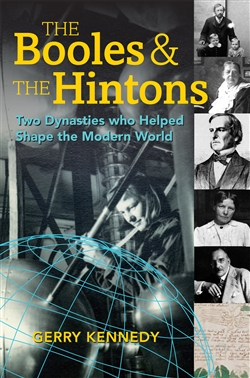
Ashgate: Geography, Technology and Instruments of Exploration
Amazon: Deadly Victorian Remedies
Hermann: La critique de la science depuis 1968
The MIT Press: Make It New: The History of Silicon Valley Design
ART & EXHIBITIONS:
The Guardian: My highlights: The Samuel Pepys: Plague, Fire, Revolution exhibition by Michael Prodger
Royal Museums Greenwich: Samuel Pepys Season 20 November 2015–28 March 2016
The Architects Newspaper: Not Dead Yet
The Mary Rose: ‘Ringing the Changes’: Mary Rose Museum to re-open in 2016 with unrestricted views of the ship
Science Museum: Leonardo da Vinci: The Mechanics of Genius 10 February 2016–4 September 2016
Royal College of Surgeons: Designing Bodies 24 November 2015–20 February 2016
Nature: A view from the bridge: On Reflection: the art and neuroscience of mirrors
Royal Society: Seeing closer: 350 years of microscope Runs till 17 December 2015
Museum of the History of Science: Henry Moseley: A Scientist Lost to War Runs until 31 January 2016
DPLA: From Colonialism to Tourism: Maps in American Culture
The Huntarian: The Kangaroo and the Moose Runs until 21 February 2016
Science Museum: Cosmonauts: Birth of the Space Age Runs to 13 March 2016
Natural History Museum, London: Bauer Brothers art exhibition Runs till 26 February 2017
Museum of Science and Industry: Meet Baby Every Tuesday, Wednesday, Thursday, & Saturday
Guiding Lights: 500 years of Trinity House and safety at sea Runs till 4 January 2016
Southbank Centre: Faraday’s synaptic gap Runs till 10 January 2016
Science Museum: Ada Lovelace Runs till 31 March 2016
Hunterian Museum: Designing Bodies: Models of human anatomy from 1945 to now 24 November 2015–20 February 2016
THEATRE, OPERA AND FILMS:
Gielgud Theatre: The Curious Incident of the Dog in the Night-Time Booking to 18 June 2016
Upcoming: The Old Operating Theatre: Surgeon to the Dead 10-12 & 15-17 December 2015
EVENTS:
The History of Science, Medicine, & Technology at Oxford University: Open Day 2 December 2015
National Botanic Gardens, Glasnevin: Afternoon Lecture – Plant-hunters in Petticoats – a history of Irish women in botany 5 December 2015
Museum of the History of Science: Lightning Strikes! 5 December 2015
PAINTING OF THE WEEK:

Samuel Crompton Inventing the Spinning Mule by Alfred Walter Bayes, 1895
(c) Bolton Library & Museum Services, Bolton Council; Supplied by The Public Catalogue Foundation
TELEVISION:
SLIDE SHOW:
VIDEOS:
AHF: Video from Manhattan Project Symposium Now Available
Youtube: Yale University: Becoming Darwin: History, Memory, and Biography, “Stories of a Scientific Life”
Youtube: AHF: Trinity Test Preparations
Youtube: Wellcome Collection: Tobacco resuscitation kit
Dispersal of Darwin: Janet Browne on becoming Darwin (3 lectures)
RADIO:
BBC Radio 4: Too Old to Be a Genius
BBC Radio 4: Self Drives: Maxwell’s Equations
PODCASTS:
Londonist Out Loud: Pepys Show
Soundcloud: AMSEOnline: Century of the Atom…told through the voices of scientists who created the nuclear age
ANNOUNCEMENTS:
World Association for the History of Veterinary Medicine: 2016 Young Scholars Award Competition: Best original essay on any topic of relevance to the history of the veterinary field
Barts Pathology Museum and the Hunterian Museum at the Royal College of Surgeons, London: CfP: Corpses, Cadavers and Catalogues: The Mobilities of Dead Bodies and Body Parts, Past and Present 17–18 May 2016
La Salle des Actes de la faculté de Pharmacie de Paris: Colloque: Nicolas Lémery (1645-1715), un savant en son siècle 9 Décembre 2015
St Anne’s College Oxford: CfP: Medicine and Modernity in the Long Nineteenth Century 10–11 September 2016
University of Cambridge: CRASSH: Digital Editing Now 7–9 January 2016
Birkbeck Early Modern Society: CfP: 9th Annual Student Conference Sensing the Early Modern 20 February 2016
Comitatus: A Journal of Medieval and Renaissance Studies: Vol. 47 (2016) Call for Papers
ICOHTEC: Maurice Dumas Prize
University of Durham: CfP: Interdisciplinary International Women’s Day Conference, Durham University, 8 March 2016 Re-Sounding Voices: Women, Silence and the Production of Knowledge
Nasher Museum of Art at Duke University: Symposium: Apps, Maps & Models: Digital Pedagogy and Research in Art History, Archaeology & Visual Studies 22 February 2016
Villa Vigoni (Italy): CfP: Pseudo-Paracelsus: Alchemy and Forgery in Early Modern Medicine and Natural Philosophy 25–28 July 2016
University of Oxford: St Cross College: Conference: Medieval Physics in Oxford 27 February 2016
University of Zurich: CfP: Objects of psychiatry: Between thing-making, reification & personhood 8–11 June 2016
Rijksmuseum Amsterdam: Symposium: Navies in Miniature 4–5 February 2016
LOOKING FOR WORK:
Society for the History of Technology: The Hindle Fellowship
University of Huddersfield: Research Assistant in Medieval and Early Modern Material Culture (1400–1700)
Yale University: Beinecke Rare Book and Manuscript Library seeks Associate Director for Collections, Research & Education
University of Utrecht: PhD Candidate History of Art, Science and Technology
People’s History Museum: Archivist
University of Liverpool: History: Lecturer/Senior Lecturer – Medical Humanities
University of Glasgow: The 2016/17 round of Lord Kelvin/Adam Smith PhD Scholarships is open for applications until Friday 22 January 2016
University of Notre Dame: Two Postdoctoral Fellowships in History and/or Philosophy of Science
Universität zu Lübeck: Juniorprofessor W1 “Wissenschaftsgeschichte der Psychologie”
University of Kent: Postgraduate Funding
Chalmers University of Technology: PhD student position in History of Technology







